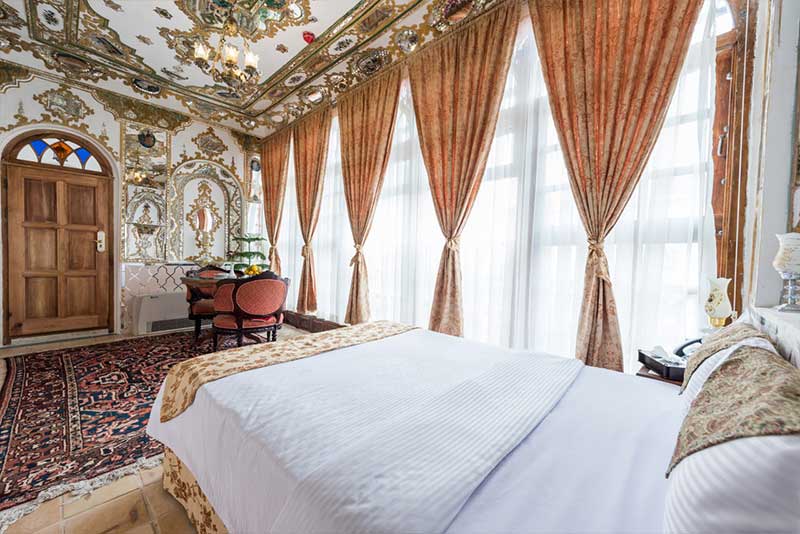یکی از درخشانترین دورههای هنر ایران پس از اسلام دوره صفویه است، در سال 907 قمری (1502م.) شاه اسماعیل، سلسله صفوی را تأسیس کرد و در این دوره مراکز و کانونهای صنعتی و هنری در ایران افزایش یافت.در ابتدای تأسیس این سلسله، تبریز پایتخت بود و به همین سبب این شهر مرکزی برای فعالیتهای هنرمندانی مانند خطاطان، تذهیبکاران، نقاشان و صحافان و همچنین هنرمندانی که در دیگر فنون و صنایع کار میکردند و هنرمندانی که درصنایع منسوجات و بافت پارچه به کار میپرداختند، تبدیل شد.
وقتی شاه عباس اصفهان را پایتخت خود قرار داد، نقشه جدیدی برای شهر طرح کرد از جمله: خیابان بزرگ و معروف چهارباغ را او ساخت و طرفین خیابان را دستور داد درخت بکارند، این خیابان به پل بزرگی که روی زاینده رود است، میرسد. در میانه شهر، میدان بزرگ «امام خمینی(ره)» قرار دارد. مسجد امام درسمت جنوب و قصر عالیقاپو در مغرب و مسجد شیخ لطفالله در مشرق و سردر بازار قیصریه در شمال آن جای گرفتهاند.
این میدان جای چوگانبازی بوده و دروازههای سنگی که برای این بازی ساخته شده، هنوز در دو سوی میدان موجود است. در چهار سوی این میدان قریب 200 باب حجرات در دو طبقه ساخته شده است.
بنای مسجد امام که در جنوب میدان واقع شده، از لحاظ معماری و کاشیکاری و حجاری و عظمت گنبد و منارههای بلند آن، از شاهکارهای قرن یازدهم قمری است.
کتیبه سر در اصلی مسجد بر روی کاشی معرق وبه خط ثلث علیرضا عباسی نوشته شده و تاریخ 1025 ق. بر آن است. معمار این مسجد «استاد علیاکبر اصفهانی» و مباشر ساختمان «محب علی بیگالله» بودهاند.
عالیقاپو با ایوان بلند آن در مغرب میدان جای دارد. عالیقاپو دارای جلوخان و شش طبقه ساختمان است که در هر طبقه تزیینات و گچبری و نقاشی موجود است. ایوان رفیع آن با ستونهای چوبی وسقف خاتم نیز بسیار جالب است.
مسجد شیخ لطفالله که در شرق میدان واقع شده، گنبد زیبایی دارد که از کاشی پوشیده شده و طرح آن نقش تاک یا اسلیمی بزرگ است و با شکل و اندازه گنبد تناسب کاملی دارد.
راهروی مسجد که به شبستان و محراب بینظیر آن منتهی میشود، دارای کاشی کاری خشتی بسیار زیبا و پنجرههای سنگی مشبک است.
کاشی کاری داخل شبستان شامل کاشی های هفت رنگ و معرقکاری های زیباست و کتیبههای معرق و قطار و پیچ کاشیس فیروزهای و پنجرههای مشبک کاشی است، طرح نقوش و رنگآمیزی های متنوع و الوان نارنجی و لاجوردی، جلال و زیبایی خیرهکنندهای به این شبستان بخشیده است.
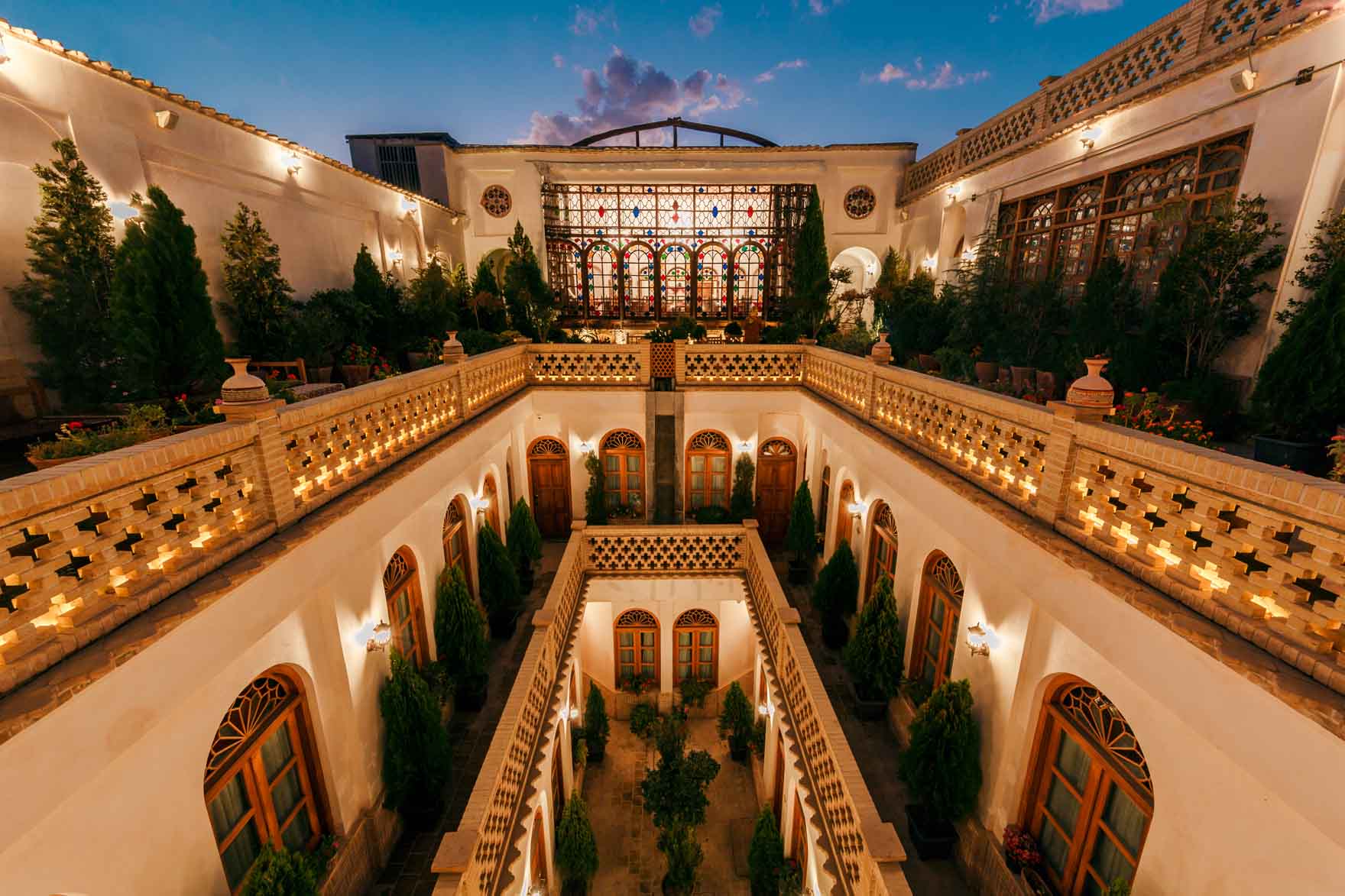
کاشی کاری سقف داخلی شبستان، با طرح لوزی و ریزهکاریهای خاصی که در آن به کار رفته اعجابانگیز است. محراب کاشی معرق و مقرنسکاری آن نیز در زمره آثار مهم هنری است از لحاظ صنعت کاشیپزی و معرقکاری، شاهکاری به شمار میرود.
سردر بازار، بخش شمالی، علاوه بر کاشیکاری زیبا، مجالس نقاشی زیبایی دارد که قسمتی از آن شامل تصاویر جنگ شاه عباس با ازبکان و مجالس بزم شاهی است.
کاخ چهلستون، با 20 ستون چوبی بلند در ایوان و تالار آیینه با سقف منقوش و زراندود و منبتکاری وگچبری و نقاشیهای عالی، یکی از مشهورترین کاخهای این دوره است.
قصر هشت بهشت نیز از نظر بُعد مناظر باغ به میزان وسیعتری اهمیت معماری دارد. این قصر را برای جشنهای مجلل درنظر گرفته بودند. شهرت این کاخ گذشته از جنبه معماری وزیبایی، به سبب استفاده ازسنگهای مرمر و طاق مقرنسکاری و نقاشی مناظر کاشیکاری خاص آن است. آیینهکاری این کاخ عامل دیگری در زیبایی بنا بوده است.
تالار اشرف، شامل یک تالار بزرگ و دو اتاق در کنار آن است، اهمیت این بنا گذشته از نظر معماری وسقف های بزرگ ضربی، به خاطر مقرنسکاری و نقاشی و تصاویر طلاکاری سقف آن است.
مدرسه چهارباغ با سردر ورودی و گنبد و دو مناره رفیع از نظر شیوه کاشیکاری و رنگآمیزی جلب نظر میکند. بنای زیبای این مدرسه و کاروانسرا و بازار در خیابان چهارباغ احداث شده است.
به امر شاه عباس، در سراسر ایران، کاروانسراهای بزرگی نیز اغلب از آجر و گاهی ازسنگ ساخته شده است. در این دوره به علت دو جنبه مهم مذهبی و اقتصادی، تعداد زیادی کاروانسرا ساخته شد.
شیوه ساختمانی کاروانسراها بیشتر چهار ایوانی است، ولی انواع دیگری مانند مثلث، هشت ضلعی، دایره، کوهستانی و متفرقه در بین این بناها دیده میشود.
از کاروانسراهای این دوره "مهیار"، "مادرشاه" و" شیخ علی خان"در اصفهان و کاروانسرای "بیستون" درکرمانشاه را میتوان نام برد.
در دوره صفویه همچنین تعداد زیادی پل ساخته شد. معماری این پلها از نظر زیبایی و شیوه پلسازی بسیار چشمگیرند. پل الله وردی خان یا 33 پل در انتهای خیابان چهارباغ در اصفهان در دو طبقه بر روی رودخانه زاینده رود واقع شده و 300 متر طول و 14 متر عرض دارد. در دو سوی جاده اصلی، راهروی سرپوشیدهای برای پیادهروان ساخته شده است.
پل خواجو که بر روی زاینده رود ساخته شده، از نظر معماری و کاشیکاری مشهور است. طول پل 132 متر و عرض آن 12 متر است. این پل چیزی بیش از وسیله عبور از رودخانه بوده، از لحاظ تناسب و جلوه، زیبایی چشمگیری دارد. این پلها نه تنها برای عبور بلکه برای توقف نیز طراحی شده است و در آنها جاهایی برای تفریح و درنگ وجود دارد. در سراسر طول پل، غرفههای کوچک زیبایی تعبیه شده که با کاشی و نقشهای دیواری زیبایی آراسته است.
از دیگر کاخ های که در اواخر دوران صفویه ساخته شد می توان کاخ قصر منشی را نام برد که بعد از مرمت به هتل قصرمنشی تبدیل شده و نام یکی از اتاق های آن اتاق صفوی می باشد.
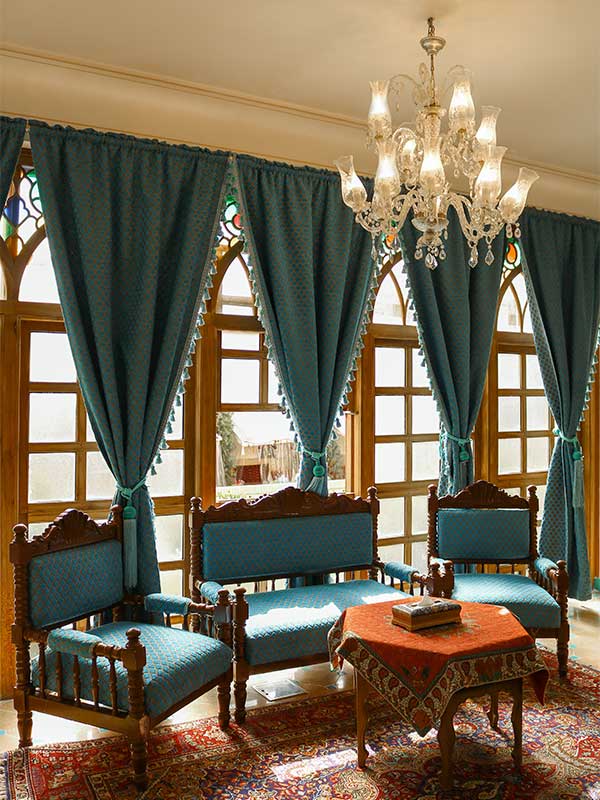
منبع: هتل قصرمنشی
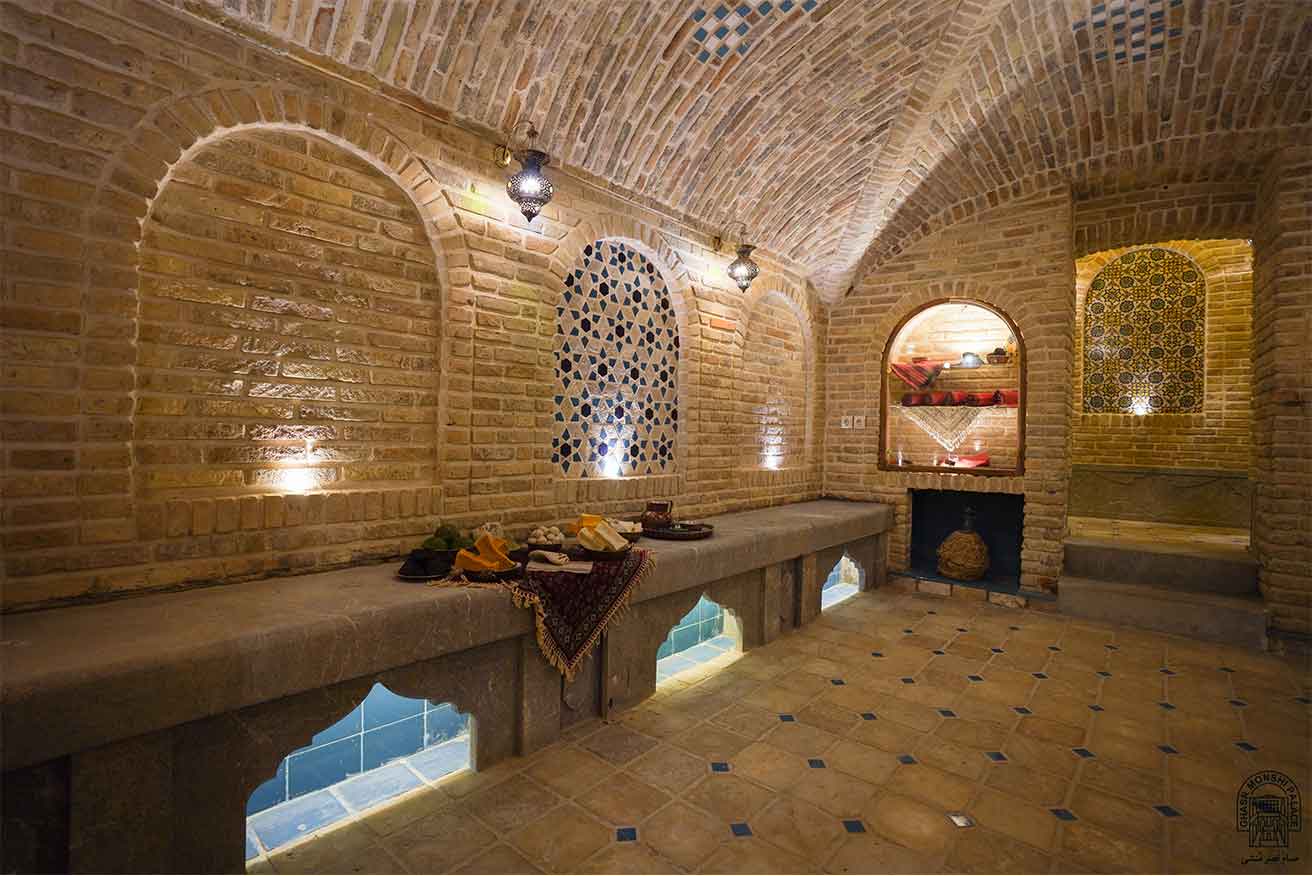 This hotel was renovated twice, in 1384 in a limited way and in 1394 completely, during which some parts of the building were completely renovated and added to the main building of the building, in the near future you You can also see the traditional bath of this complex.
This hotel was renovated twice, in 1384 in a limited way and in 1394 completely, during which some parts of the building were completely renovated and added to the main building of the building, in the near future you You can also see the traditional bath of this complex.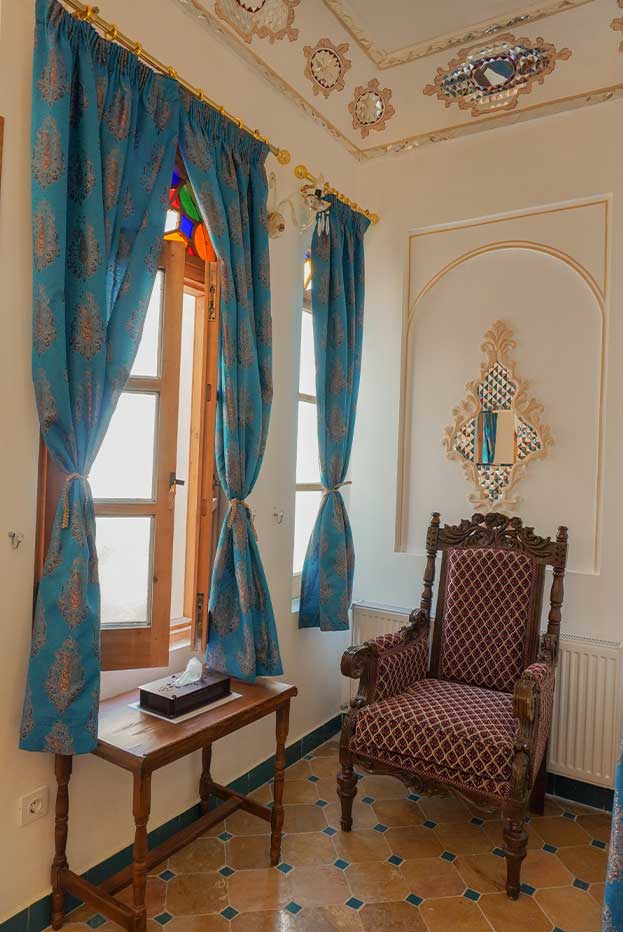
 •
•




